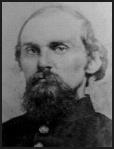John Bratton
| John Bratton | |
|---|---|

John Bratton
|
|
| Member of the U.S. House of Representatives from South Carolina's 4th district |
|
|
In office December 8, 1884 – March 3, 1885 |
|
| Preceded by | John H. Evins |
| Succeeded by | William H. Perry |
| 22nd South Carolina Comptroller General | |
|
In office November 30, 1880 – December 1, 1882 |
|
| Governor | Johnson Hagood |
| Preceded by | John C. Coit |
| Succeeded by | William E. Stoney |
| Member of the South Carolina Senate from Fairfield County | |
|
In office November 27, 1865 – September 21, 1866 |
|
| Personal details | |
| Born |
March 7, 1831 Winnsboro, South Carolina |
| Died | January 12, 1898 (aged 66) Winnsboro, South Carolina |
| Political party | Democratic |
| Alma mater |
South Carolina College South Carolina Medical College |
| Profession | soldier, planter, doctor |
| Military service | |
| Nickname(s) | [Old] Reliable |
| Allegiance |
|
| Service/branch |
|
| Years of service | 1861–65 |
| Rank |
|
| Unit | Army of Northern Virginia |
| Commands | 6th South Carolina Infantry Bratton's Brigade |
| Battles/wars | |
John Bratton (March 7, 1831 – January 12, 1898) was a U.S. Representative from South Carolina, as well as a general in the Confederate States Army during the American Civil War. He rose from private to brigadier general and led a regiment and brigade in the Army of Northern Virginia in several important battles in both the Eastern Theater and Western Theater during the war.
Bratton was born in Winnsboro, South Carolina. He attended the Academy of Mount Zion Institute in Winnsboro and graduated from South Carolina College at Columbia in 1850 and from South Carolina Medical College at Charleston in 1853. He practiced medicine in Winnsboro from 1853 to 1861. Bratton was also a successful planter, acquiring high valued real-estate and as many as seventy-five slaves by 1860.
John Bratton was one of only a few men who enlisted in the Confederate Army as a private, rose to the rank of brigadier general, and fought in both Eastern and Western theaters during the Civil War.
He enlisted in the Confederate States Army on April 1, 1861, as a private in Company C of the 6th South Carolina Infantry and was promoted a month later to captain. On March 1, 1862, he became a colonel in charge of the regiment. He participated in the Peninsula Campaign and was wounded and captured in the Battle of Seven Pines.
...
Wikipedia
